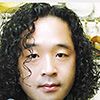[Part 2] Brightening the Background for Softer Light Effects
"Ceiling bounce" is a technique for controlling the brightness of the background. Not only so, it can also be used to soften the light at the same time. This technique can be employed in a wide variety of ways for your indoor shots, so you are encouraged to give it a try. (Reported by: Yasuhiko Kani, Model: Sayuri Kurahashi (IARA))

First technique you should try when using an external flash
There are mainly two ways of using an external flash unit. The first technique, "direct flash", directs the emitter at the subject, while the second, "indirect flash", directs the emitter at a wall or the ceiling. The latter technique of directing flash at the ceiling is also known as "ceiling bounce", which creates a natural lighting effect that wraps the subject in soft light. Of course, with the TTL Auto function, flash exposure can be controlled automatically up to the maximum flash output.
One of the points to bear in mind is to choose a white-coloured ceiling so that the bounced flash can be dispersed effectively. Note that the ceiling bounce technique has almost no effect if the ceiling is black in colour. Also, if the ceiling you are using is high, or if you want the bounced flash to cover a wider area, you will need a flash with a larger guide number. Similarly, you can create soft side light effects with this technique by bouncing the flash off the walls on the two sides.
Issues Concerning Camera Flash
Light becomes too glaring with a dark background

- A large and dark shadow was created in the background behind the subject. I did not want shadows to be cast.
- While this can be employed intentionally as a form of photographic expression, I wanted to produce an image with a softer impression.
- The background is dark, and brightness is uneven. I wanted to reproduce a natural tone while retaining the atmosphere of the surroundings.
EOS 7D/ EF17-40mm f/4L USM/ FL: 24mm/ Program AE (1/60 sec., f/4)/ ISO 200/ WB: Auto
As the camera was held vertically, large shadows were created by the plant and the wall on the two sides of the subject, making the photo appear less appealing. Also, if you are photographing in a dimly-lit room, firing the flash directly from the front of the subject will result in a stronger facial shine due to the greater contrast.
Problems solved with ceiling bounce!

Shooting Conditions
Flash: Speedlite 580 EX II
Camera Body: EOS 7D
Lens: EF17-40mm f/4L USM
Metering Mode: Evaluative
Shooting Mode: Program AE
Program AE (1/60 sec., f/4)/ ISO 200/ WB: Auto
The subject was standing close to the background, so I directed the flash at the ceiling directly above to bounce the flash light. If the subject is located at a distance away from the background, adjust the angle of the lighting area forward to obtain a better balance between the brightness in the background and the foreground. Bouncing flash from above creates a lighting effect that is close to light what we usually see, thus allowing the subject to appear more natural in the photo.
Do not include the ceiling when using ceiling bounce

When you are employing the ceiling bounce technique, the basic rule is to exclude the ceiling from the composition. Strong light reflection that is not dispersed will cast a dark shadow and cause gradation to appear. Include only areas brightened with soft light in your composition.

*The Speedlite 580EX II was used to take all sample photographs in this article.

Born in 1970 and graduated from Nihon University, Kani studied under photographer Shin Yamagishi before he went independent. He currently focuses on portrait photography, and is also engaged in a wide variety of activities for magazines, photo albums, CD jackets, advertisements, and movies.

A monthly magazine that believes that enjoyment of photography will increase the more one learns about camera functions. It delivers news on the latest cameras and features and regularly introduces various photography techniques.
Published by Impress Corporation
































